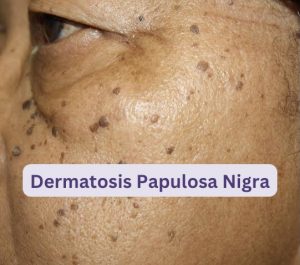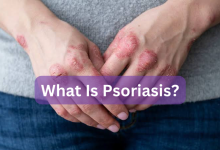Dermatosis Papulosa Nigra- Causes And Treament

Dermatosis Papulosa Nigra (DPN) is a common skin condition that affects people of African descent. It is characterized by the presence of small, raised, dark brown or black spots or mole on the skin, usually on the face and neck. Although these spots are not dangerous, they can be unsightly and cause emotional distress for those affected.
Causes
The exact cause of dermatosis papulosa nigra (DPN) is not known. However, some factors that may contribute to its development include:
- Genetics: DPN is more common in people of African descent, suggesting a genetic component to its development.
- Sun exposure: Prolonged sun exposure may increase the risk of developing DPN, as UV radiation can damage the skin and trigger the growth of new spots.
- Hormonal changes: Hormonal imbalances, such as those seen during puberty or pregnancy, may contribute to the development of DPN.
- Age: DPN tends to develop in the teenage years and worsens with age, which suggests that aging may play a role in its development.
- Skin damage: Trauma to the skin, such as cuts or burns, may trigger the development of new spots.
Treatment
Dermatosis papulosa nigra (DPN) does not require treatment, as it is not a dangerous or painful condition. However, some people opt for treatment to improve the appearance of the spots on their skin. The following are some common treatments for DPN:
- Cryotherapy: Cryotherapy involves freezing the spots with liquid nitrogen, which causes the cells to die and the spots to eventually disappear.
- Topical creams: Some topical creams, such as retinoids and hydroquinone, can lighten the appearance of the spots and improve the overall look of the skin.
- Laser therapy: Lasers can be used to remove the spots by targeting the melanin, or dark pigment, in the skin. This is a more invasive option and may cause some discomfort.
- Surgical excision: In severe cases, the spots can be surgically removed. This is a more invasive option and may result in scarring.
It is important to keep in mind that these treatments may not completely remove the spots and that they may reappear over time. In addition, some treatments may cause side effects, such as redness or irritation, and regular monitoring by a dermatologist is recommended to monitor any changes in the appearance of the spots.
If you have DPN, it is important to take good care of your skin to prevent further damage. This includes protecting your skin from sun exposure by wearing a hat, using a broad-spectrum sunscreen, and limiting your time in the sun. You should also see a dermatologist for regular check-ups to monitor any changes in the appearance of the spots.
It is important to discuss your options with a dermatologist, who can recommend the best treatment plan for you based on the severity of your condition and your personal preferences.







